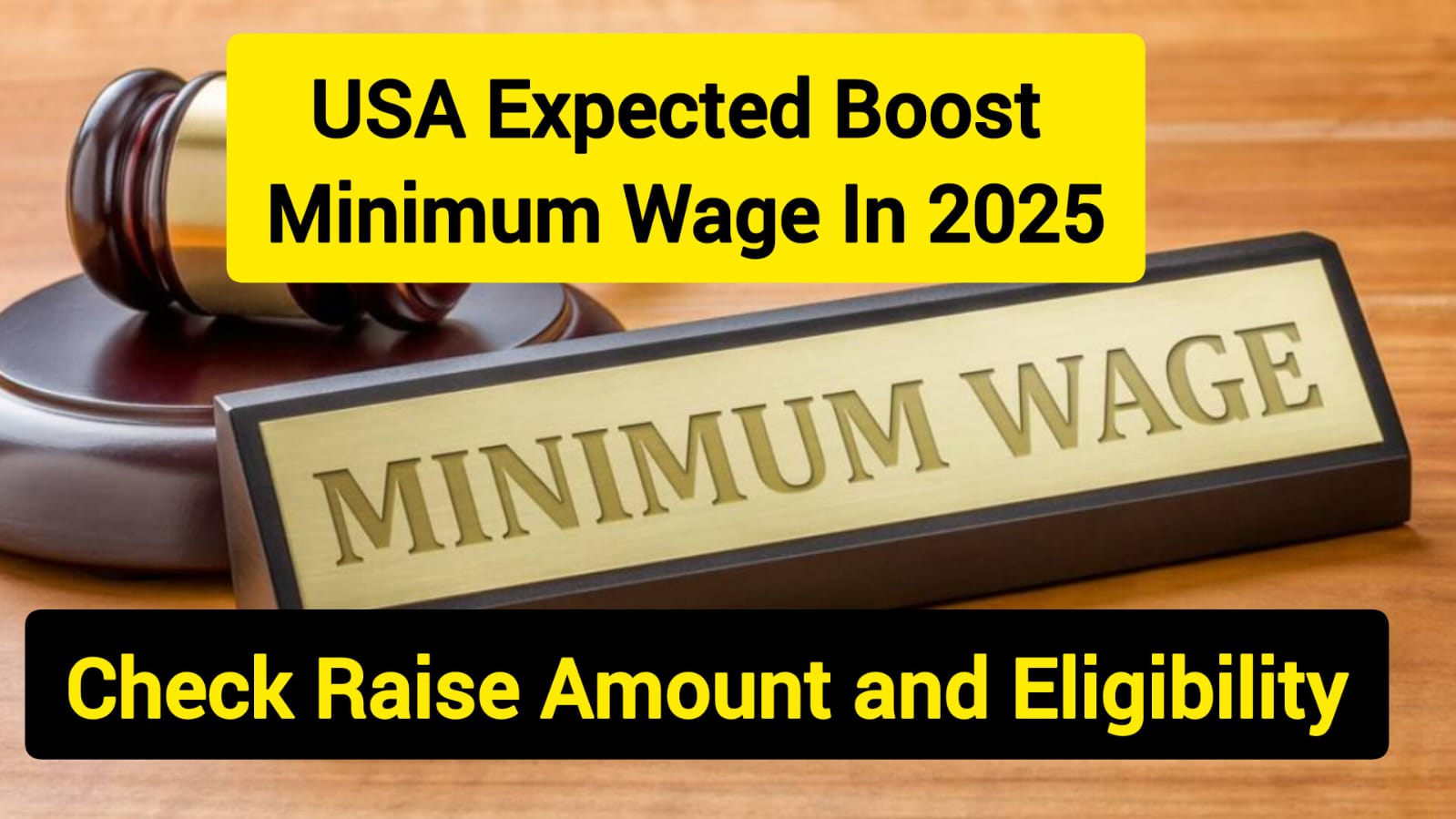Are you one of the millions of American workers eagerly anticipating a bigger paycheck this year? The landscape of minimum wage in the United States is undergoing significant changes in 2025, with numerous states implementing increases while the federal minimum wage remains unchanged.
These adjustments could mean more money in your pocket, but the exact amount depends largely on where you live and work. Let’s dive into the details of these changes, who qualifies, and what it means for both workers and employers across the country.
Minimum wage increases are like rainfall after a drought for many workers struggling to keep up with rising living costs. While some states are seeing modest sprinkles, others are experiencing substantial downpours of wage growth.
Whether you’re a full-time employee, part-timer, or gig worker, understanding these changes is crucial for planning your financial future in 2025.
Understanding the 2025 Minimum Wage Landscape
First, let’s address the elephant in the room: the federal minimum wage remains unchanged at $7.25 per hour in 2025, a rate that hasn’t budged since 2009.
This stagnation has prompted many states to take matters into their own hands, creating a patchwork of minimum wage rates across the country.
As of April 2025, 21 states have already implemented minimum wage increases for the year. These adjustments are happening through two primary mechanisms: scheduled legislative increases and automatic inflation-based adjustments.
It’s like watching different trains moving at various speeds on parallel tracks – all heading toward higher wages, but arriving at different times and destinations.
For workers in states like California, Washington, and New York, the minimum wage now exceeds $15 per hour, more than double the federal minimum.
Meanwhile, workers in states without their own minimum wage laws remain at the federal rate of $7.25, creating a significant disparity in base pay depending on location.
Federal Contractors See Significant Boost
While the general federal minimum wage remains at $7.25, there’s a bright spot for federal contractors. Effective April 1, 2025, the minimum wage for workers on federal contracts has increased to $17.75 per hour – a 2.4% increase from the previous rate of $17.30.
This increase, mandated by Executive Order 14026, ensures that those working on federal projects receive compensation that better reflects current economic conditions.
It’s like getting an upgrade to business class while most passengers remain in economy – a significant benefit for those who qualify.
The federal contractor minimum wage is adjusted annually based on the Consumer Price Index, providing a built-in mechanism to help these wages keep pace with inflation. Since its introduction in 2021, this rate has steadily climbed:
- 2021: $15.00
- 2022: $15.55
- 2023: $16.65
- 2024: $17.30
- 2025: $17.75
State-by-State Minimum Wage Increases
The most dramatic changes in minimum wage are happening at the state level, with 21 states implementing increases in 2025. Here’s a breakdown of some notable state increases:
| State | 2024 Minimum Wage | 2025 Minimum Wage | Increase |
|---|---|---|---|
| California | $16.00 | $16.50 | +$0.50 |
| Washington | $16.28 | $16.66 | +$0.38 |
| New Jersey | $14.13 | $15.49 | +$1.36 |
| New York | $14.20 | $15.00 | +$0.80 |
| Connecticut | $15.00 | $15.69 | +$0.69 |
| Arizona | $13.85 | $14.70 | +$0.85 |
| Colorado | $13.65 | $14.42 | +$0.77 |
| Illinois | $14.00 | $15.00 | +$1.00 |
| Delaware | $13.25 | $15.00 | +$1.75 |
| Rhode Island | $14.00 | $15.00 | +$1.00 |
Some states are making particularly notable jumps. Delaware, Illinois, and Rhode Island have all reached the $15 per hour milestone in 2025, joining the growing club of states with minimum wages at or above this threshold.
New Jersey has implemented one of the larger increases, with the minimum wage rising to $15.49 – a $1.36 boost from 2024.
Special Minimum Wage Provisions and Exceptions
The minimum wage landscape isn’t one-size-fits-all. Various states have implemented special provisions for different categories of workers, creating a more nuanced system.
Tipped Workers
For tipped employees like restaurant servers, the minimum wage structure looks quite different. The federal minimum for tipped workers remains at $2.13 per hour, provided that tips bring their total hourly earnings to at least the standard minimum wage of $7.25.
However, many states have higher tipped minimum wages or have eliminated the tip credit entirely. For example, in California, Washington, and Oregon, tipped workers must receive the full minimum wage before tips.
In New Jersey, the tipped minimum wage is now $5.62, while in New York, it’s $11.00 for food service workers. These variations create significant differences in base pay for tipped workers depending on location.
Youth and Training Wages
Several states maintain provisions for paying lower wages to young workers or those in training periods. At the federal level, workers under 20 can be paid $4.25 per hour for their first 90 days of employment.
Some states have modified these provisions. For instance, in Michigan, the youth minimum wage is 85% of the standard minimum wage for workers aged 16-17.
These provisions aim to encourage employers to hire younger, less experienced workers, though critics argue they can be exploited.
Industry-Specific Minimum Wages
Some states have implemented industry-specific minimum wages. The most notable example is California’s fast-food minimum wage, which stands at $20 per hour for workers at chains with 60 or more establishments nationwide.
This specialized rate is significantly higher than the state’s standard minimum wage of $16.50.
Impact on Workers and Businesses
The 2025 minimum wage increases will have far-reaching effects on both workers and employers. For workers, the impact is generally positive, with millions seeing larger paychecks.
The Economic Policy Institute estimates that approximately 9.2 million workers will benefit from these increases, resulting in an overall earnings boost of $5.7 billion.
For a full-time minimum wage worker in a state with a modest increase, like California’s $0.50 boost, this translates to about $1,040 in additional annual income.
In states with larger increases, like Delaware’s $1.75 jump, full-time workers could see their annual earnings increase by approximately $3,640.
For businesses, particularly those in labor-intensive industries like retail, food service, and hospitality, these increases present both challenges and opportunities.
Higher labor costs may squeeze profit margins, potentially leading to price increases, reduced hours, or accelerated automation.
However, research suggests that moderate minimum wage increases can also yield benefits for employers, including:
- Reduced employee turnover
- Increased productivity and morale
- Higher consumer spending in local economies
- Decreased training costs
It’s like upgrading your smartphone – there’s an upfront cost, but the long-term benefits in efficiency and performance can outweigh the initial investment.
Conclusion
The 2025 minimum wage landscape in the United States presents a complex picture of progress and stagnation. While the federal minimum wage remains frozen at $7.25, many states have taken the initiative to ensure their workers receive higher pay, with 21 states implementing increases this year.
These changes will put more money in the pockets of millions of American workers, particularly in states that have reached or exceeded the $15 per hour threshold.
However, the patchwork nature of these increases means that where you live and work remains a significant factor in determining your base pay.
As we move through 2025, it’s essential for both workers and employers to stay informed about the minimum wage requirements in their specific locations.
With many states implementing automatic annual adjustments based on inflation, we can expect the minimum wage landscape to continue evolving in the coming years, gradually reducing the gap between the highest and lowest-paying states.
FAQs About 2025 Minimum Wage Increases
1. Is the federal minimum wage increasing in 2025? No, the federal minimum wage remains at $7.25 per hour in 2025, unchanged since 2009. However, the minimum wage for federal contractors has increased to $17.75 per hour effective April 1, 2025.
2. Which states have the highest minimum wages in 2025? As of April 2025, the states with the highest minimum wages are California ($16.50), Washington ($16.66), and New Jersey ($15.49). However, some localities within these states have even higher minimum wages, such as Seattle and San Francisco.
3. What happens if my state’s minimum wage is lower than the federal minimum? If your state has a minimum wage lower than the federal minimum of $7.25 (like Wyoming and Georgia, which have $5.15 minimum wages), employers must pay the federal minimum wage for most jobs. However, there are some exceptions to federal minimum wage laws.
4. Do tipped workers get the full minimum wage? It depends on the state. Under federal law, employers can pay tipped workers as little as $2.13 per hour as long as tips bring their total hourly earnings to at least $7.25. However, many states have higher tipped minimum wages or require employers to pay the full minimum wage regardless of tips.
5. How do these minimum wage increases affect small businesses? Small businesses may face challenges adjusting to higher minimum wages, particularly in states with significant increases. However, research suggests that moderate increases typically don’t lead to significant job losses, and businesses often adapt through a combination of slight price increases, efficiency improvements, and reduced turnover costs. Many states implement gradual increases to give businesses time to adjust.
Big Update on CPP: In April 2025 Pension Payment Could Be Higher
$2350 OAS Increasing for Canada’s Seniors in 2025: Check Your Eligibility Criteria!



